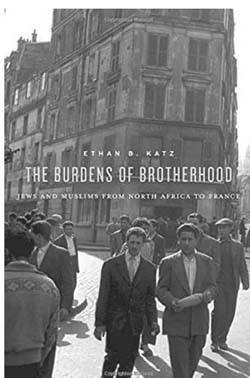This study is a broad history of Muslims and Jews in France from World War I to the present times. With half a million Jews and 4 to 6 million Muslims, France is home to the largest Jewish and Muslim populations in Western Europe. It tries to look at how the lives of Jews and Muslims had been entwined on both sides of the French Mediterranean. Historically what we call Jewish-Muslim relations in France were neither inescapably ethno-religious nor necessarily oppositional, rather they interacted on a wide range of terms. As we move to the second half of the 20th century, we discern that relations between Muslims and Jews became defined increasingly by potentially differing ethno-religious categories. However, in the context, both groups continued to interact in an assortment of ways that far escape the narrow framing of their relationships as interactions between Jews and Muslims.
To start with, Jews in France generally had certain advantages over Muslims. Firstly, the majority of Jews who migrated to France in the 20th century were French citizens, educated and knew French; on the other hand, few Muslim immigrants from North Africa shared these characteristics. These differences played a major function in Jewish capability to move into middle class professions and better neighbourhoods quite easily. Secondly, a well-established Jewish community gathered together enormous resources to welcome its North African co-religionists; no such structure was available for Muslims.
However, both Jews and Muslims tried hard to show their loyalty to France. But the former did it as a statement of affirmation, and the latter as a plea for equal rights.
This book also maintains that Jews and Muslims in France did not perceive one another in an elemental manner, rather their relations were always ‘triangular’, with France as the third party. The author argues that hitherto, the descriptions of their relations have usually assigned Jews and Muslims to misleadingly dichotomous positions that made nearly imperceptible the greater fluidities of daily interface and survival. Historians have often emphasized solid divisions which have classically masked important competing threads in the history of Jews and Muslims and their relations as they opened up in the war. In this study the author has made assessments between the different cities where these two communities often lived, and he tries to bring out how urban settings, geography, local politics and population sizes have defined Jewish-Muslim relations in modern France. He emphasizes the concept of ‘situational ethnicity’, highlighting that often ethnic identity is not fixed but assembled and settled among both intra-group and external forces. However, the interactions were not very close at the family level, owing to the absence of Muslim women on the French mainland, which inhibited greater social cohesion between Jews and Muslim families. The relations between the Jews and Muslims saw many ups and downs; there were several riots in the 1930s, especially the Constantine riots of 1934. However, during that period leading individuals and organizations on both sides continued to work for greater amity. Largely encounters between members of the two groups took surprising turns of coexistence, compassion and courage.

